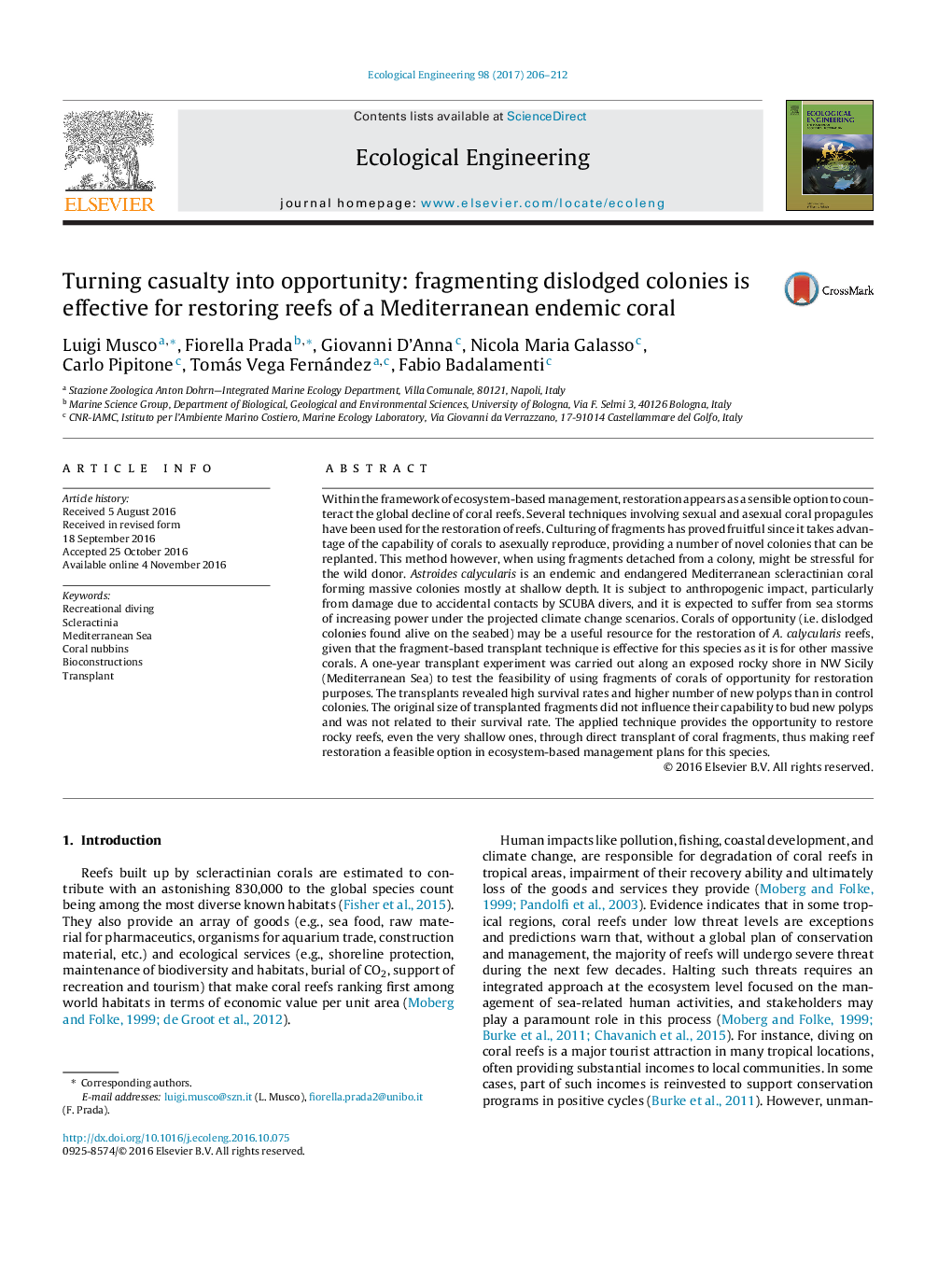| کد مقاله | کد نشریه | سال انتشار | مقاله انگلیسی | نسخه تمام متن |
|---|---|---|---|---|
| 5744071 | 1618001 | 2017 | 7 صفحه PDF | دانلود رایگان |
- For Astroides calycularis reefs restoration/rehabilitation is feasible.
- Colonies dislodged by casualties are an environmental friendly resource.
- Transplanting fragmented dislodged colonies is the most effective restoration method.
- Producing novel colonies from fragments reduces burden on wild populations.
Within the framework of ecosystem-based management, restoration appears as a sensible option to counteract the global decline of coral reefs. Several techniques involving sexual and asexual coral propagules have been used for the restoration of reefs. Culturing of fragments has proved fruitful since it takes advantage of the capability of corals to asexually reproduce, providing a number of novel colonies that can be replanted. This method however, when using fragments detached from a colony, might be stressful for the wild donor. Astroides calycularis is an endemic and endangered Mediterranean scleractinian coral forming massive colonies mostly at shallow depth. It is subject to anthropogenic impact, particularly from damage due to accidental contacts by SCUBA divers, and it is expected to suffer from sea storms of increasing power under the projected climate change scenarios. Corals of opportunity (i.e. dislodged colonies found alive on the seabed) may be a useful resource for the restoration of A. calycularis reefs, given that the fragment-based transplant technique is effective for this species as it is for other massive corals. A one-year transplant experiment was carried out along an exposed rocky shore in NW Sicily (Mediterranean Sea) to test the feasibility of using fragments of corals of opportunity for restoration purposes. The transplants revealed high survival rates and higher number of new polyps than in control colonies. The original size of transplanted fragments did not influence their capability to bud new polyps and was not related to their survival rate. The applied technique provides the opportunity to restore rocky reefs, even the very shallow ones, through direct transplant of coral fragments, thus making reef restoration a feasible option in ecosystem-based management plans for this species.
Journal: Ecological Engineering - Volume 98, January 2017, Pages 206-212
